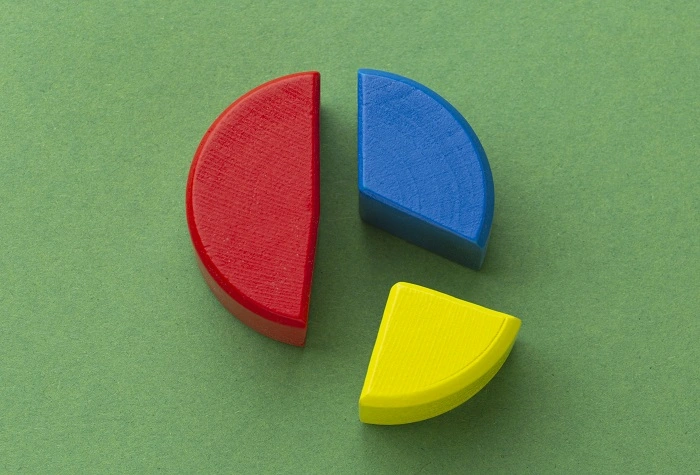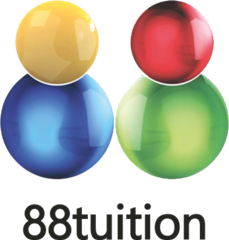A key idea in mathematics that is applied frequently in daily life is percentage. The ability to grasp and analyse a variety of areas of the world around them, such as business, statistics, and science, is why it is crucial for kids to learn about percentages. This blog will discuss the value of teaching children percentages and how doing so can help kids in the long term.
Understanding percentages in everyday life
Children routinely come into contact with percentages in daily life, even if they are not always aware of it. For instance, a child who receives a test score of 80% understands that they did well. The child can figure out the discounted price when parents or teachers provide a 20% discount on a good or service. They might learn about the proportion of people who have received a specific disease’s vaccine or the number of voters who have backed a specific candidate when they watch the news.
Understanding percentages is essential in each of these situations. Without it, kids would not be able to appreciate the significance of particular events or situations or make informed judgements. As a result, understanding percentages is crucial for everyday life as well as academic performance.
Learning percentages and financial literacy

For financial literacy, it’s also crucial to understand percentages. Children will learn about financial concepts like interest rates, loan repayment, and investment returns as they get older. In each of these cases, understanding percentages is essential. For instance, if a young person wishes to borrow money, they should be aware of the interest rate and how it would impact their payback obligations. They must be aware of the rate of return they might anticipate if they choose to invest their money.
Also, teaching kids how to grasp percentages can encourage them to save money. For example, if a youngster decides to save 20% of their weekly allowance, they will learn the importance of planning and budgeting. When dealing with more complicated financial issues as an adult, these abilities will be helpful not just in childhood.
Interpreting data and statistics

Also frequently used in data and statistics are percentages. Children will encounter percentages in tables, charts, and graphs that are intended to visually depict data. Children who comprehend percentages are better able to perceive and analyse data, leading to more educated decisions.
A youngster can easily comprehend how well they performed in comparison to their classmates if they are shown a graph that compares the percentage of pupils who received an A on a test. They can also compare data from various sources using percentages. They can examine the statistics and make inferences, for instance, if they want to compare the proportion of boys and girls who participate in a specific sport.
Preparing for academic success
Last but not least, mastering percentages is essential for academic achievement. A fundamental idea in mathematics, percentages are also employed frequently in other academic disciplines like science and social studies. Children may find it difficult to understand more complex ideas in these disciplines if they don’t have a strong understanding of percentages.
For instance, percentages are frequently employed in science to describe concentrations, proportions, and data changes. They are used to show demographic information and population fluctuations in social studies. Children can therefore benefit from these courses and be better equipped for their future academic endeavours by having a strong foundation in percentages.
Teaching strategies for learning percentages
Some kids may find it difficult to learn percentages, especially if they still struggle with the idea of fractions and decimals. To help kids learn percentages, parents and instructors can employ a number of different teaching techniques.
Using actual examples from everyday life to teach percentages is a good tactic. For instance, parents might use supermarket receipts to demonstrate how discounts are calculated using percentages, and teachers can use sports statistics to demonstrate how success rates are represented using percentages.
Using visual tools to express percentages, such as diagrams and charts, is another successful tactic. Through their simple and straightforward representation, these visual aids can benefit kids in understanding the concept of percentages. Instructors can make bar graphs or pie charts that show percentages and let the kids engage with them.
Another effective method for teaching percentages is gamification. Children are more likely to engage with the subject matter and remember the information if the learning process is made into a game. For instance, teachers can design a game in which students must determine the percentage of accurate answers on a test or a shopping simulation in which students must determine the percentage of product discounts.
In addition, practice and repetition are essential for mastering percentages. Children can practise their percentage calculations by working on practice problems that teachers can provide them with in a variety of situations. Children can internalise the idea of percentages and use it in new contexts with the aid of repetition.
In conclusion, it’s crucial for kids to learn percentages. It helps children prepare for academic success, improve financial literacy, make educated decisions in daily life, and analyse facts and statistics. Parents and instructors may assist kids in mastering the concept of percentages and developing a useful ability that will be helpful to them in the future by employing excellent teaching techniques.
Exam Smart Tips
Exam Smart Tip #1 – How to Encourage Our Kids to Speak Better?
Exam Smart Tip #2 – How to avoid carelessness?
Exam Smart Tip #3 – Establishing Routines!
Exam Smart Tip #4 – Let’s Read Carefully!
Exam Smart Tip #5 – Beating the Exam Fever!
Exam Smart Tip #6 – How to Eat Right for the Exams?
Exam Smart Tip #7 – How to Avoid a Meltdown?
Exam Smart Tip #8 – Taking Stress out of Tests
Who We Are
Mission statement – “Empower every student to achieve full potential”
88tuition Pte Ltd offers the best PSLE Tuition Singapore for children looking to ace the PSLE exam. With effective learning materials and high-quality explanatory videos by experienced trainers, children are provided with the best online PSLE tuition.
With the basics learnt well, children will be able to grasp advanced concepts easily. Looking for the best PSLE math tuition, PSLE Science tuition and PSLE English tuition in Singapore? 88tuition has got you covered. The online training videos and assessments are designed in a way that children are made to enjoy the learning process.
UEN 201817310C
271 Bukit Timah Road; #03-08; Singapore 259708



